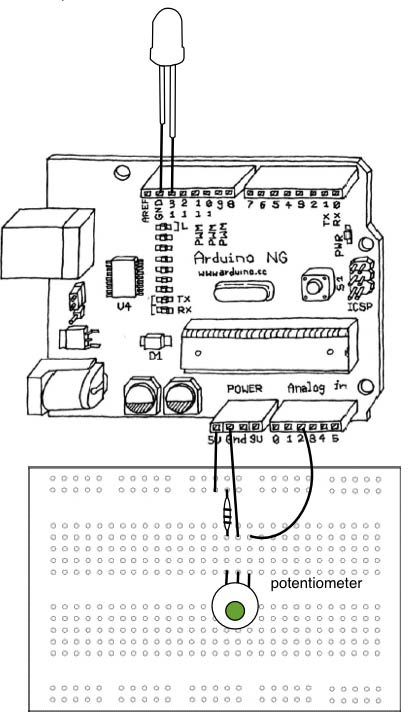This program will allow adjust the speed of a blinking LED with analog input. Follow this patch to connect a potentiometer to your Arduino board. Then put an the long lead of an LED in pin 13 of your digital in/out, and the short lead in Ground.
/*
* AnalogInput
* by DojoDave <http://www.0j0.org>
* Turns on and off a light emitting diode(LED) connected to digital
* pin 13. The amount of time the LED will be on and off depends on
* the value obtained by analogRead(). In the easiest case we connect
* a potentiometer to analog pin 2.
*/
int potPin = 2; // select the input pin for the potentiometer
int ledPin = 13; // select the pin for the LED
int val = 0; // variable to store the value coming from the sensor
void setup() {
pinMode(ledPin, OUTPUT); // declare the ledPin as an OUTPUT}
void loop() {
val = analogRead(potPin); // read the value from the sensor
digitalWrite(ledPin, HIGH); // turn the ledPin on
delay(val); // stop the program for some time
digitalWrite(ledPin, LOW); // turn the ledPin off
delay(val); // stop the program for some time} Program a flex sensor
Program a flex sensor
A Flex sensor changes resistance between 10k Ohms (straight) and 40k Ohms (bent). Follow this schematic to patch a flex sensor to your Arduino board. Connect the long lead of an LED in pin 13 of your digital in/out, and the short lead in Ground.
For more detail: Blinking LED With analog input Using Arduino

